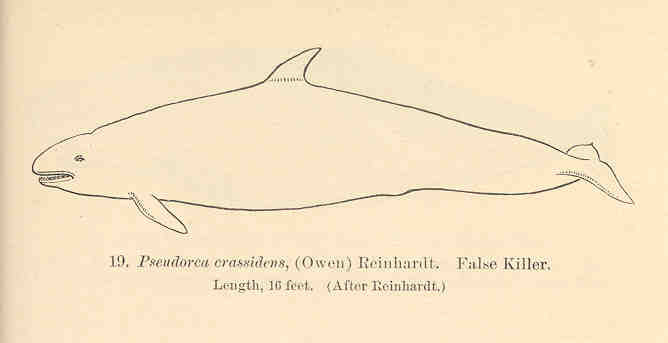|
| Query: Dolphin fish | Result: 107th of 179 | |
false killer whale (Pseudorca crassidens)
| Subject: | false killer whale (Pseudorca crassidens)
| | Poster: | Wiki Photos (---@---.---)
| |

| Resolution: 668x343
File Size: 20030 Bytes
Upload Date: 2017:03:19 17:53:08
|
Author Frederick W. True (1858–1914)
Description
English: Pseudorca crassidens, (Owen) Reinhardt. False Killer
Length, 16 Feet (After Reinhardt
Subject: False killer whale, Pseudorca crassidens
Tag: Aquatic Mammals
Date 1883
Source/Photographer
English: True, Frederick W. (1885) Suggestions to the keepers of the U. S. Lifesaving stations, light-houses, and light-ships, and to other observers, relative to the best means of collecting and preserving specimens of whales and porpoises, Report of the Commissioner (United States Commission of Fish and Fisheries), 1883, Washington, DC: Government Printing Office
Source: https://commons.wikimedia.org/wiki/File:FMIB_34115_Pseudorca_crassidens,_(Owen)_Reinhardt_False_Killer.jpeg
The false killer whale (Pseudorca crassidens) is the fourth-largest dolphin, a member of Delphinidae, the oceanic dolphin family. False killer whales live in temperate and tropical waters throughout the world. As its name implies, the false killer whale shares characteristics with the more widely known killer whale; as well as similarities in appearance, both species attack and kill other marine mammals. |
^o^
Animal Pictures Archive for smart phones
^o^
|
|